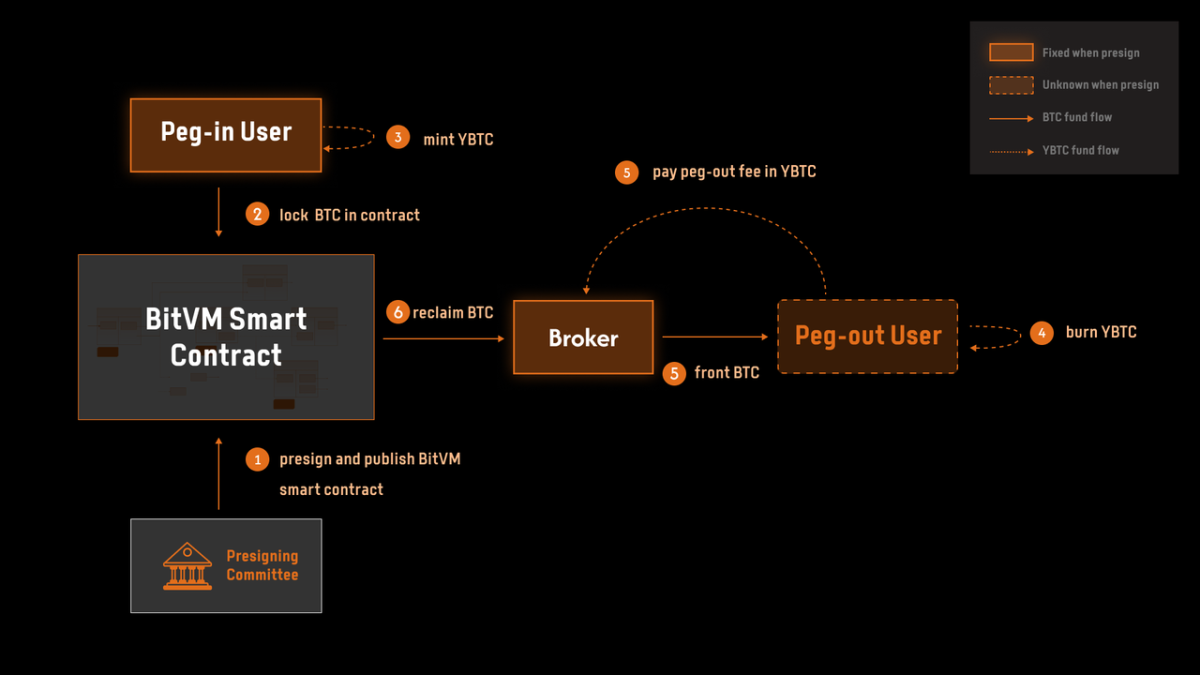The unveiling of BitVM smart contracts is a pivotal development in the journey towards augmenting Bitcoin’s scalability and programmability. Originating from the BitVM protocol, Bitlayer’s Finality Bridge brings forth the first iteration of the protocol on the testnet, paving the way for the envisioned “Season 2” of the Bitcoin Renaissance.

Unlike traditional BTC bridges that often necessitated dependence on centralized entities or dubious trust premises, the Finality Bridge utilizes a mix of BitVM smart contracts, fraud proofs, and zero-knowledge proofs. This amalgamation not only bolsters security but also substantially lessens the reliance on third parties. While it may not have reached the trustless level offered by Lightning, it is a vast improvement over existing sidechain designs claiming to be Bitcoin Layer 2s, and it also expands the design potential for Bitcoin applications.
The system functions on a principle where funds are securely confined in addresses regulated by a BitVM smart contract, operating on the assumption that there will be at least one honest participant in the system. This arrangement inherently reduces the trust necessities but introduces additional complexities that Bitlayer seeks to manage with this bridge version.

How Trust Operates
In practical terms, when Bitcoin is secured into the BitVM smart contract via the Finality Bridge, users receive YBTC – a token that strictly adheres to a 1:1 peg with Bitcoin. This peg is not merely a promise but is enforced by the underlying smart contract logic, ensuring that each YBTC symbolizes a genuine, locked Bitcoin on the main chain. This process enables users to engage in DeFi activities like lending, borrowing, and yield farming within the Bitlayer ecosystem without forfeiting the security and settlement assurances provided by Bitcoin.
While some may object to these activities, this architecture offers users certain guarantees that were previously unattainable with conventional sidechain designs, without requiring any modifications to Bitcoin. For a more detailed analysis of the various risk levels associated with sidechain designs, refer to Bitcoin Layers’ evaluation of Bitlayer.
Until these advances come to pass, the Bitlayer Finality Bridge stands as the best embodiment of the BitVM 2 paradigm. It symbolizes the potential of Bitcoin following the return of developers from centralized chains. Despite the challenges that BitVM chains may encounter, the prospect of Bitcoin emerging as the Ultimate Settlement Chain for all economic activity is incredibly thrilling.
This article is an Analysis. The views expressed are solely those of the author and do not necessarily represent the views of BTC Inc or Bitcoin Magazine.
Guillaume’s articles may occasionally discuss topics or companies that are part of his firm’s investment portfolio (UTXO Management). The opinions expressed are his own and do not reflect the views of his employer or its affiliates. He is not receiving any financial compensation for these Analyses. Readers should not treat this content as financial advice or an endorsement of any specific company or investment. Always perform your own research before making financial decisions.



